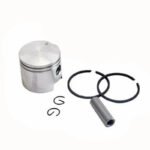
Proper equipment maintenance is crucial for ensuring smooth operations in plantations, tea estates, and farms. Whether you’re managing heavy machinery or simpler tools, maintaining their efficiency is vital to prevent costly breakdowns and downtime. However, the debate often arises: should you handle maintenance tasks yourself, or hire professionals? This article dives into the pros and cons of DIY maintenance versus professional servicing, offering a comprehensive guide to help you make the best decision for your operation.
1. Understanding DIY Maintenance
DIY (Do-It-Yourself) maintenance involves handling basic upkeep tasks without external help. Here’s what you need to know:
Pros of DIY Maintenance:
- Cost Savings: Avoiding professional fees can significantly reduce maintenance expenses.
- Immediate Action: Quick fixes reduce downtime, especially in emergencies.
- Skill Development: Regular DIY tasks help staff gain basic technical knowledge.
Cons of DIY Maintenance:
- Risk of Errors: Improper repairs may lead to bigger issues later.
- Limited Scope: DIY is suitable for minor fixes but not for complex systems.
- Warranty Concerns: Some manufacturers void warranties if unqualified personnel perform repairs.
2. Professional Servicing: What It Entails
Professional servicing involves certified technicians who perform in-depth diagnostics, repairs, and preventive maintenance.
Pros of Professional Servicing:
- Expertise and Precision: Skilled professionals ensure accurate troubleshooting and repairs.
- Access to Specialized Tools: Professionals use advanced tools that may not be available to you.
- Warranty Preservation: Professional servicing often maintains the manufacturer’s warranty.
- Improved Longevity: Regular professional checks extend the lifespan of your machinery.
Cons of Professional Servicing:
- Higher Costs: Service fees can be expensive, especially for high-end machinery.
- Downtime: Scheduling and waiting for professionals can disrupt workflows.
- Dependence on Availability: Remote areas may face delays due to limited service providers.
3. Cost Comparison: DIY vs. Professional Servicing
Understanding the financial implications of each option is essential for making an informed choice. Here’s a breakdown:
Initial Costs:
- DIY Maintenance:
- Tools and supplies (e.g., wrenches, lubricants, filters).
- Training for staff.
- Professional Servicing:
- One-time service fees.
- Potential transportation costs for equipment.
Long-Term Costs:
- DIY Maintenance:
- Possible recurring costs due to improper repairs.
- Higher risk of frequent breakdowns.
- Professional Servicing:
- Reduced breakdowns thanks to thorough inspections and repairs.
- Improved efficiency leading to lower operating costs.
Hidden Costs:
- DIY Maintenance: Downtime from failed repairs.
- Professional Servicing: Productivity boosts from well-maintained machinery.
4. When to Choose DIY Maintenance
DIY maintenance is ideal for straightforward tasks and situations where quick action is required.
Suitable Scenarios:
- Simple Equipment: Tools like small irrigation pumps or sprayers.
- Basic Tasks: Lubrication, cleaning filters, tightening bolts.
- Emergency Fixes: Minor adjustments to resume operations quickly.
Best Practices for DIY Maintenance:
- Follow Manufacturer’s Guidelines: Always consult manuals for proper procedures.
- Use Quality Tools: Avoid cheap tools that may damage equipment.
- Train Your Team: Regular workshops improve efficiency and safety.
5. When to Opt for Professional Servicing
Professional servicing is indispensable for complex systems and high-stakes situations.
Suitable Scenarios:
- Sophisticated Machinery: Harvesters, compressors, and hydraulic systems.
- Safety-Critical Repairs: Brakes, electrical components, or structural issues.
- Major Breakdowns: Problems requiring specialized diagnostics and parts.
Benefits of Professional Servicing:
- Comprehensive inspections detect hidden issues.
- Ensures compliance with safety standards.
- Reduces the likelihood of repeated repairs.
6. Balancing Both Approaches: A Practical Guide
Combining DIY maintenance and professional servicing is often the most effective strategy. Here’s how to create a balanced approach:
Step 1: Develop a Maintenance Schedule
- Daily Checks: Inspect oil levels, tire pressure, and visible wear.
- Weekly Tasks: Clean air filters, check belts, and lubricate parts.
- Monthly Inspections: Look for signs of corrosion, loose bolts, and fluid leaks.
Step 2: Identify Key Milestones for Professional Servicing
- Schedule professional servicing every 6 months or after heavy usage periods.
- Conduct thorough inspections before peak operational seasons.
Step 3: Train Your Team
- Provide basic training for routine tasks.
- Teach staff to identify warning signs and escalate issues promptly.
Step 4: Build Relationships with Reliable Service Providers
- Partner with trusted local professionals for quick and effective service.
- Negotiate annual maintenance contracts for cost savings and priority service.
7. Case Studies and Success Stories
Tea Estate Success Story:
A tea estate implemented a balanced maintenance plan, performing DIY checks daily while relying on professionals for semi-annual servicing. The result? Reduced breakdowns by 40% and increased productivity by 25%.
Rubber Plantation Example:
A rubber plantation faced frequent machine failures due to exclusive reliance on DIY maintenance. After introducing professional inspections, equipment lifespan improved, saving $5,000 annually in repair costs.
8. Conclusion
In summary, both DIY maintenance and professional servicing play crucial roles in equipment upkeep. While DIY saves costs and empowers staff, professional servicing ensures precision and reliability. By balancing both approaches, you can optimize equipment performance, reduce downtime, and maximize profitability.
Key Takeaway: Assess your specific needs, the complexity of your machinery, and the skill level of your team to create a tailored maintenance plan.
Share your maintenance experiences in the comments below!
Need help with professional servicing? Contact us for a free consultation and checklist for basic DIY maintenance tasks.




